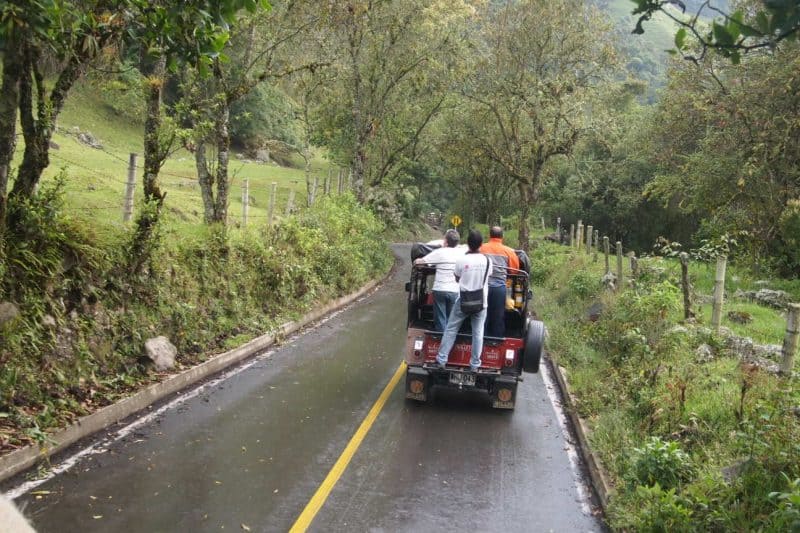A Day in Coffee Country with Men Who Live the Bean
I found my essential moment of this exciting trip through prosperous and friendly Colombia…It came while I looked up at the steep green hills of the Corcora Valley while standing on the back of an old Willy’s Jeep, driving down a tree-lined country road. Yes that was it. We were in a caravan of three Jeeps, and the beauty of the place and the mode of transportation made for a very wonderful Tuesday afternoon. The Jeeps came over here after the second world war, and are the preferred way of seeing this beautiful country.

We are in coffee country. It’s a tough business, with wholesale prices of a pound once hovering at $3.00, now at a measley $1.50. Still, coffee growers we met like Manuel Sobogal would never think of growing anything else. “It’s in our family, it’s in our blood,” he told us, while his American business partner Tyler Youngblood and an associate prepared French Roast and Chemex coffees for us to sample. Tyler, from Los Angeles, is importing some of the best of the coffee grown here, that for most Colombians is not a part of the daily morning routine. That’s because up to 80 percent of the best Arabica beans are shipped out of the country. So despite being surrounded by coffee trees, this is one of the few places you can get a top shelf cup of coffee here in the Coffee Triangle.

But Manuel is fighting back with a very clever scheme that’s similar to what has been done on American farms. He’s got a lovely Hacienda where guests can relax with views of the coffee fields and take excursions, and he’s making a six-step coffee experience, that will open in to the public in April. Guests will walk a narrow path through the coffee trees and learn about every aspect.
First they can learn about weaving a coffee basket from the ample supplies of bamboo, then relax on a terrace with a coffee. Then they follow the trail to a station that has water jets showing importance of water, a circular set up with different colored plastic slabs to look at the coffee beans through different filters, to a giant bamboo birdhouse, and finally to a place where they can paint their own coffee mug. It’s all about getting much more from the beans than that meager wholesale price. I think they’ll attract a lot of tourists.
Manuel explained that almost no Colombians are among his guests here–they’re all from Europe, England, Australia or the US. Tyler has made his home here in the Coffee Triangle for three years, and I asked him what he missed most about life here versus the US. He said it’s those things that at first you might think you wouldn’t miss–it’s our sense of order, and respect for the law. “At first you think it’s great that you can drink a beer on the street, or make as much noise as you want, or do anything and then you sort of miss that order and sense of responsibility of the US,” he said.
The Jeep ride took us through the Valley and ended at a big open air restaurant where we were greeted by a man with a donkey who looked a lot like Juan Valdez. With grilled trout for lunch and then a ceremonial planting of endangered wax palm trees, it capped off the exciting Jeep ride perfectly. Colombia is a beautiful country and it was nice to see how well kept up this Valley was, no litter, just a pristine unending series of pretty green hills.
